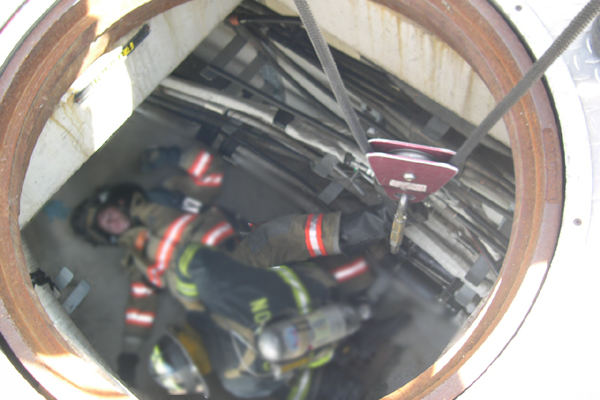Firefighting is an activity in which rarely there are more resources than needed. Also, fire, unless efforts are made to control it, will spread in different directions simultaneously and will endanger increasing number of lives. Obviously, it is not possible to solve all the problems at once while fighting the fire. Instead, these problems need to be prioritized, defining the order in which they should be solved.
Traditional perception of fireground priorities among both firefighters and civilian population has been matching in general up until recently – our main goal is saving human lives. Today too, nobody is questioning this principle, but firefighting community has arrived at refined system of priorities that allows maximizing the number of lives saved.
Before the introduction of this refined system, a common perception was that it is a duty of the firefighter to save a human life (even just one) regardless of how many firefighter lives it might cost. The fact that despite ever improving PPE and reduction of number of fires we are still losing about the same number of firefighters in the line of duty each year has forced the firefighting community to critically reconsider this approach and develop a new list of priorities.
In this new list own safety is on top of everything else:
|
This system of priorities might seem selfish at a first glance, but it is anything but. The reason for this is that the analysis of prior line of duty deaths reveals that under the pressure of psychological (the sense of duty) and physiological (adrenaline pump) factors firefighters tend to act in excessively risky manner in order to save not even a life, but sometimes property of rather insignificant value. Practice shows that the main job of the incident commander is not pushing the firefighters to do more on the fireground, but rather holding them off from unnecessary “heroism”. One of the reasons such “selfish” list has been compiled is to balance out this tendency of firefighters to take unjustified risk when fighting fires.
Another (and more important) reason for the modified list of priorities is that just like in any other form of combat, in firefighting you are either a resource or a liability. A resource that is caught in emergency immediately becomes a liability, and that liability will now pull additional resources to be rescued.
Even if just one firefighter neglects to care for his/her own safety and ends up in the emergency, such firefighter turns from a resource into a tremendous liability. This will lead to the necessity for that firefighter’s team to stop what they are doing (saving and protecting lives) and start rescuing their own member. Now the whole team becomes a liability, not a resource.
But it doesn’t end there. Undoubtedly, when IC learns that the team is in trouble, he/she will send more resources to assist the firefighters in trouble, which will put more people at risk and divert a lot of resources – and that includes the attention and focus of the IC – from their main task: saving civilian lives.
Thus, by not attending to the top priority and neglecting your own safety, a firefighter breaks down the entire chain of priorities, exposes a significant number of firefighters to unnecessary risk and, most importantly, takes away the chances of rescue from the civilian victims. In other words, the fireground priority system where own safety is on the top of the list is the case when individual egoism as well as team’s egoism are actually serving for the common good of everyone on the fireground and allows to rescue the maximum possible number of lives.
By not taking care of yourself, you steal the chances of rescue from civilians and put other firefighters in danger.
There is another important conclusion that follows from the list of fireground priorities that we have listed here. In case a team member gets in trouble, his/her fellow teammates will do everything they can to effect the rescue of the firefighter in trouble, but only to the extent that it does not place their lives in immediate and specific danger. If all attempts to rescue their own firefighter fail, the team, in the interest of the common good, and that includes the poor firefighter in distress, must abandon him/her and retreat to safety, thus clearing the path for the incoming rapid intervention team. This is not cowardice, this is a pragmatic survival tactic for all involved. A team that gets in distress while trying to save their own member increases the number of firefighters that need rescue from one to two, three or four individuals. This will require more time and resources for the rapid intervention to be successful. And incoming RIT will most likely grab those team members first as they will be naturally closer to the exit, leaving original firefighter in distress in IDLH (immediately dangerous to life and health) conditions for an extended period of time.
If you can’t help others, at least help yourself. Get the hell out and don’t become an additional victim! One dead firefighter is better than many dead firefighters.






